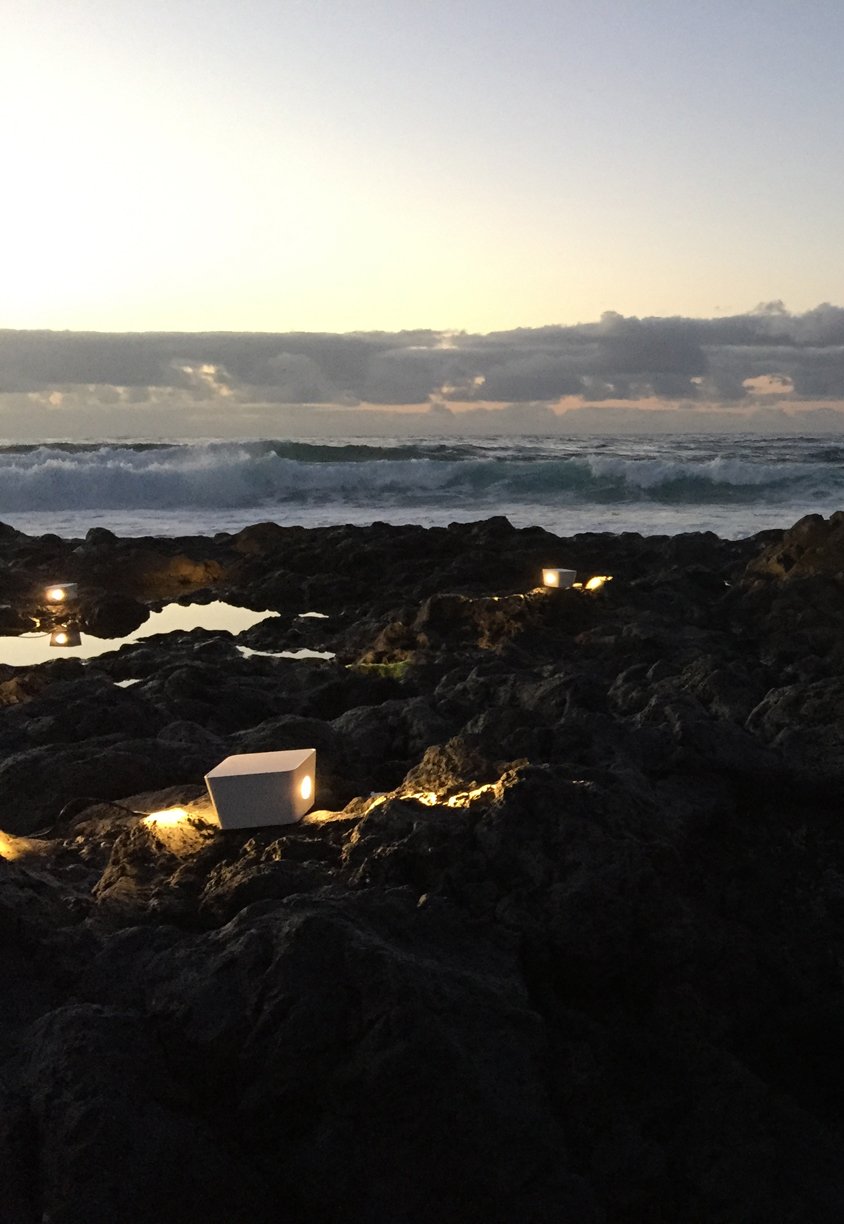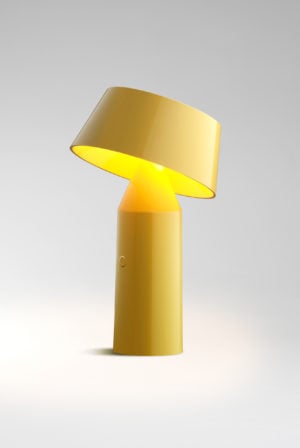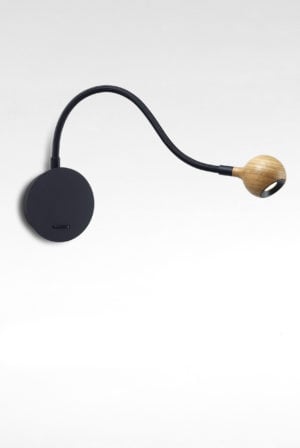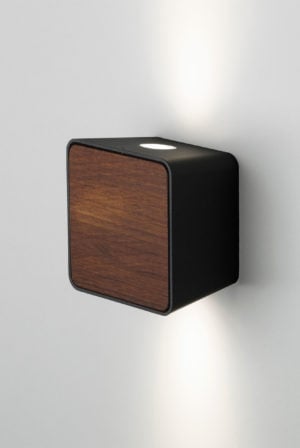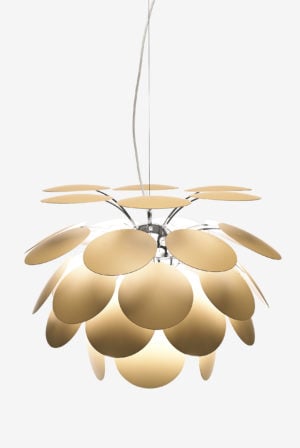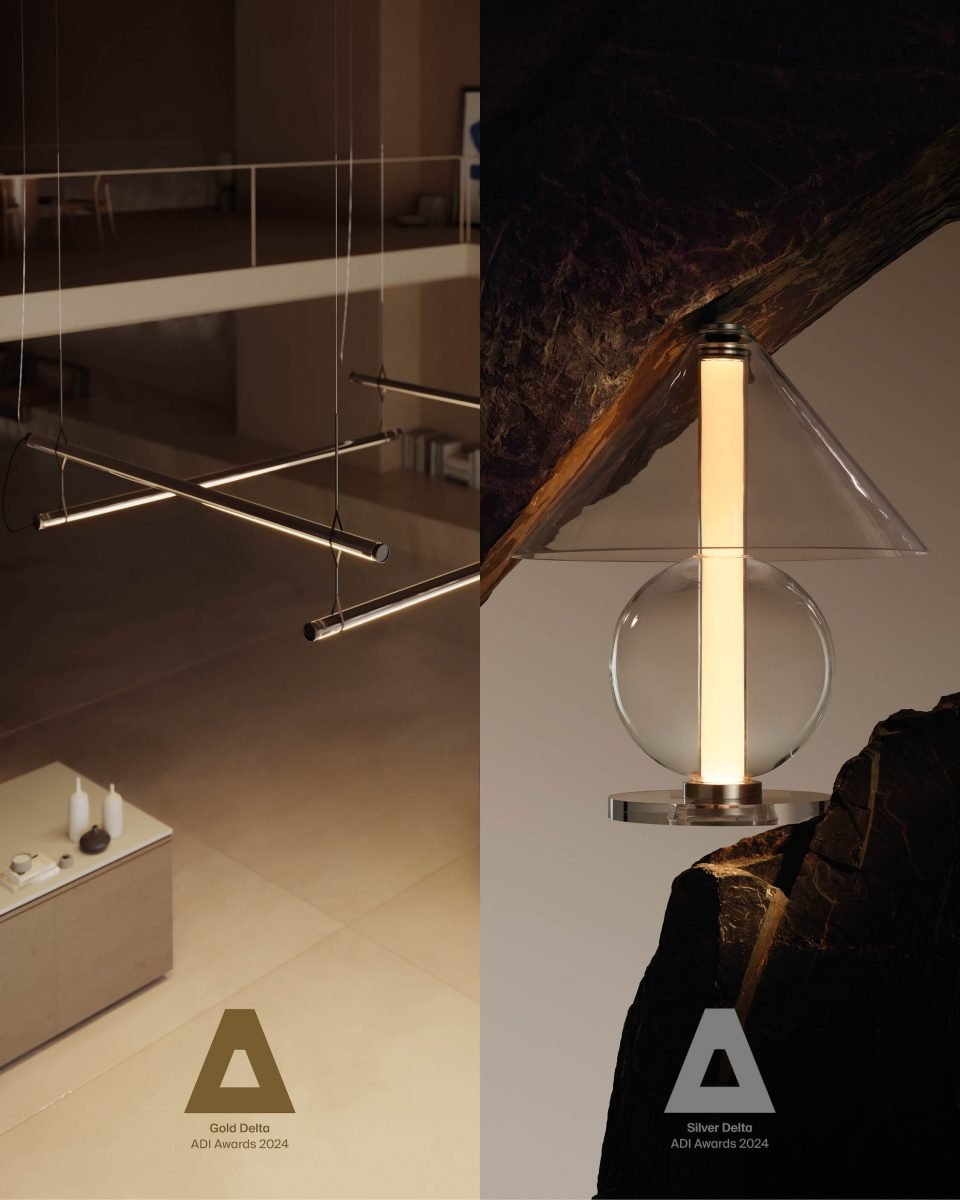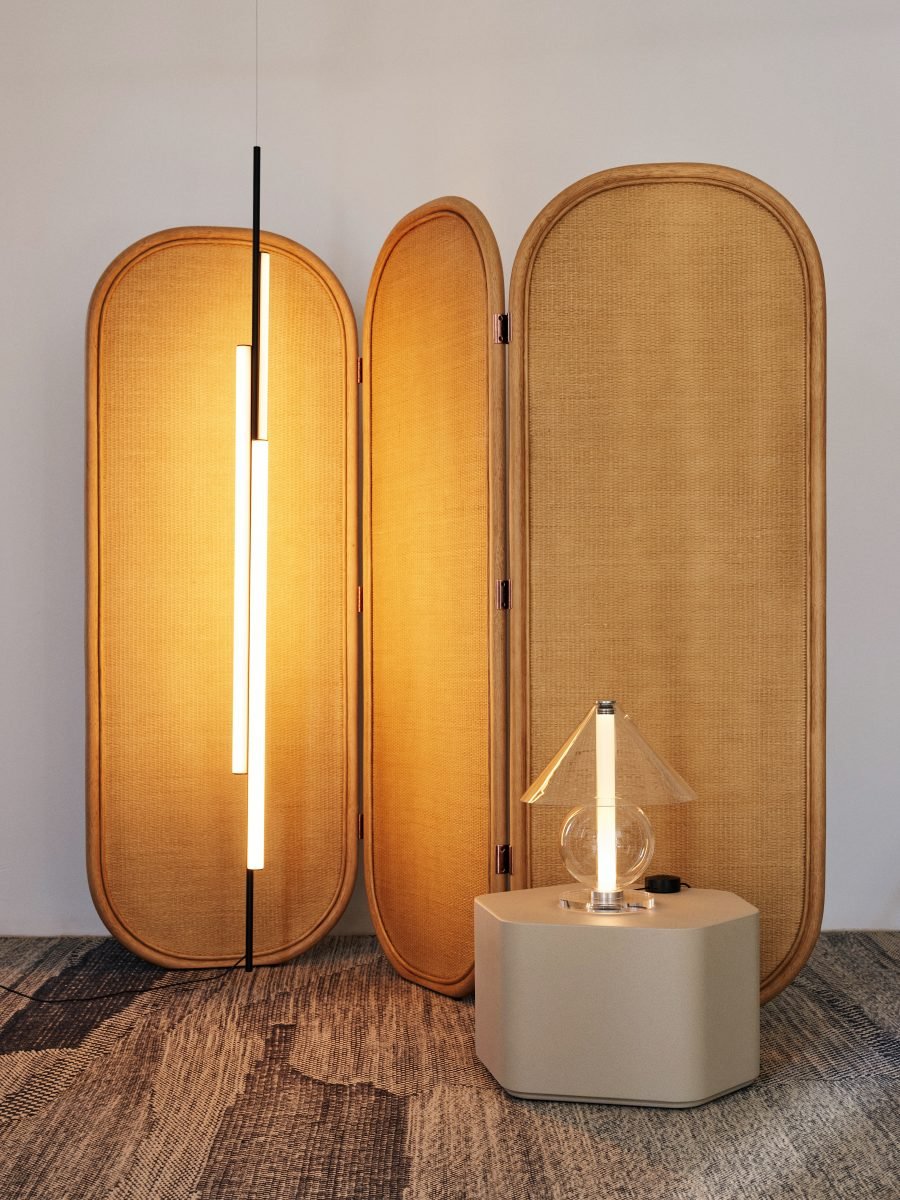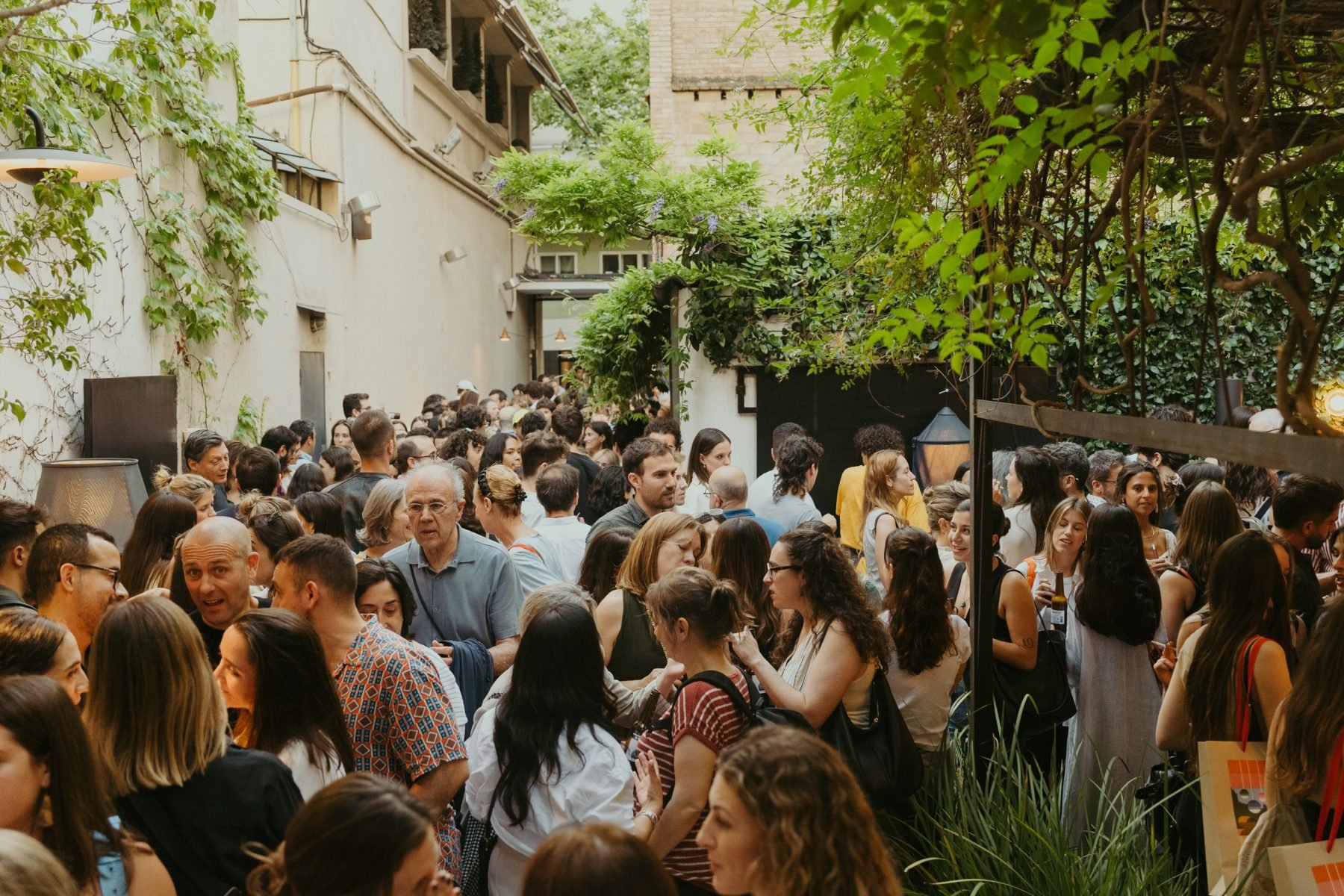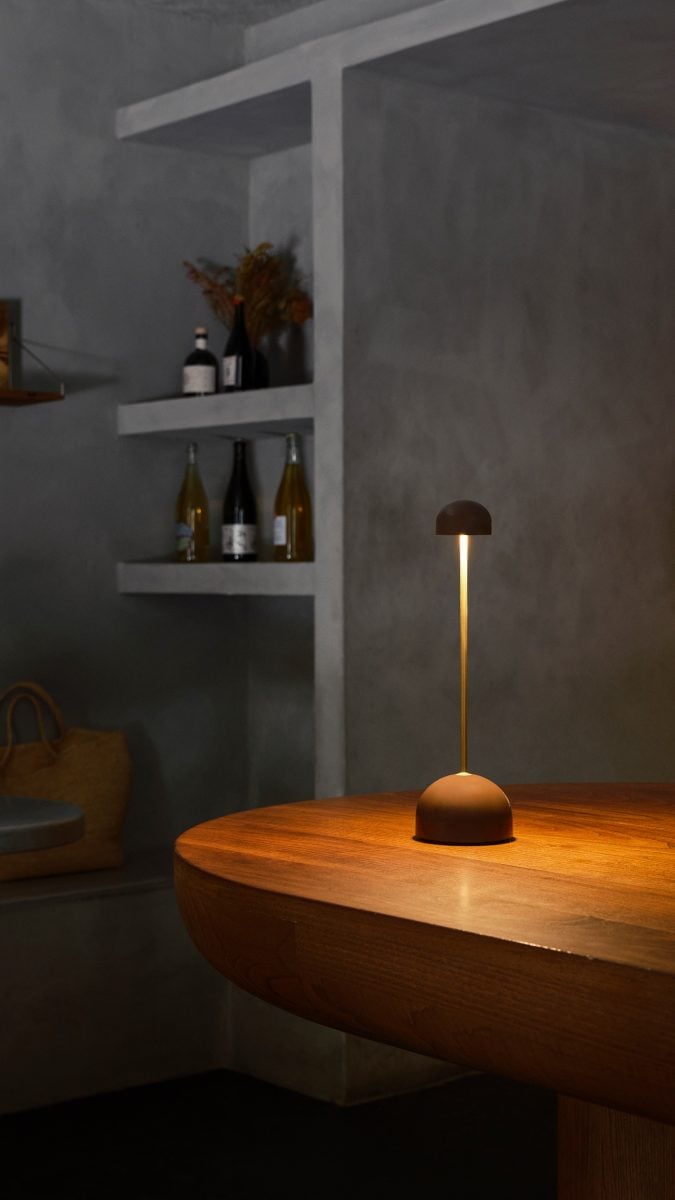Reflections on light – Christophe Mathieu – part one
A lamp should seduce you even before you turn it on
His name is French and he was born in Germany, but his Spanish accent points to the Canary Islands, where he grew up. He reached Barcelona in the mid-1980’s to finish his degree in interior design. Soon afterward he headed to Milan, where he discovered industrial design.
A restless man, he seems to carry those traveling genes of his Belgian ancestors who ventured to move to Spain in the 1960’s. With an architect and handyman father (he made lamps at home using the origami he learned while working in Germany), 30 years ago Christophe Mathieu transitioned from being a professional competitive swimmer to the world of design. He is open to unforeseen events in life and does not discount the possibility of one day maybe leaving it all and doing something totally different.
Having lived in Barcelona for years now, he is one of Marset’s veteran designers and has created several successful products for the company. However, nothing quite beats his Discocó, the firm’s current bestseller. That expansion of energy conveyed by the lamp suddenly makes more sense when you listen to Mathieu.
What do you ask of a lamp?
The first thing is that it should give off good light, always depending on the kind of lamp it is, its purpose, where it will be placed and the ways it might be used. In addition to being a device that helps us to see, it is an object with size, volume and proportions. I ask that a lamp be attractive when it is both on and off; it should seduce you even before you turn it on.
Does the perfect lamp exist?
It probably doesn’t because every user is different. What is perfect for you may not be perfect for your neighbour or even your partner. Perhaps to me, the perfect light is the right light for what it was designed for; it is comforting and beautiful as an object; it aesthetically represents the era when it was designed but has features that will allow it to last over time; it is made of good materials and is technically resolved in a skilful way; and its price does not exceed its value. I know I ask a lot!. And then you have the lamp as totem: that piece with a noticeable presence that arouses interest and fills the space. This kind of lamp usually offers ambient lighting; it is secondary. And again you have the lamp that does not stand out aesthetically but makes life more comfortable when you turn it on. Every object has the purpose for which it was designed.
You talk about each object’s purpose.
The issue of the purpose of objects is a discourse that has changed over time. In the 1980s, it was a topic that spilled plenty of ink and inspired lots of debates. If a chair wasn’t comfortable then it was a useless chair. I think that now objects are a bit more complex; it depends on the purposes for which they are designed and the way you want to use the object or lamp.
What materials do you like working with?
I like all materials if they are used properly, but I dislike them when they are used poorly. Materials are not to blame for whether they are used well or badly! In certain eras, certain materials are overused and both the public and designers get saturated. This happened in the 1990s with aluminium, and now it’s true to brass and copper.
How do you know if a material is right?
Trial and error is very important in design, so that’s why I make a lot of models and prototypes. I rarely start with a material at the beginning of a project, but instead I start with the kind of light I want and I look for elements to make it: “ideal” materials, possible execution systems, finishes, colours, retail price, whether it will be manufactured on a large scale or handcrafted. I initially envisioned the Discocó lamp with metal disks and they ended up being injected plastic. All the factors add up.
What phases in the design process do you emphasise?
Actually, I spend quite a bit of time thinking. Having a good idea is what really counts. It seems obvious, but it’s true. So how do you get good ideas? They pop up at a specific moment, even if they don’t happen suddenly. Sometimes I get a flash of inspiration, a picture of what I want an object to convey to others, but it is the outcome of certain circumstances, of the day-to-day accumulation, of continuous effort. Then I try to visualise the object in my mind as clearly as possible and I draw it on a piece of paper or directly render it as a model, which helps me to see the proportions and volume in space.
Then comes the emotional part. It is very important for this idea to spark an emotion in me, for it to enthuse me. It is almost a practical issue because it spurs me to continue. I rarely work on commission, so I design or make projects every day, just like someone else might write or paint.
Why do you prefer the word “proyectar” (the verb of proyecto or project, plan) to “diseñar” (design)?
I associate “diseñar” more with drawing and “proyectar” more with planning how to bring a project to fruition. You make a project in the future: you make something where there is nothing. And I am interested in the verb “proyectar” in relation to light, such as a slide projector, that is, using light to project an object onto a surface. Plus, I really like the connotation of sending it a long distance.
What would you like to design that you haven’t yet?
Actually, I’m always designing. As I walk down the street, I see that a store is being remodelled and when they open it I like to think about how I would have designed the interior. I go to someone’s house for the first time and I mentally design the space. Or at the beach in Tenerife where we go for vacation, there are some areas with no sand but only rocks that stretch into the sea… I start thinking and plan how I would design the access to the sea. I like to think about how to improve things; I have a blast doing it.
